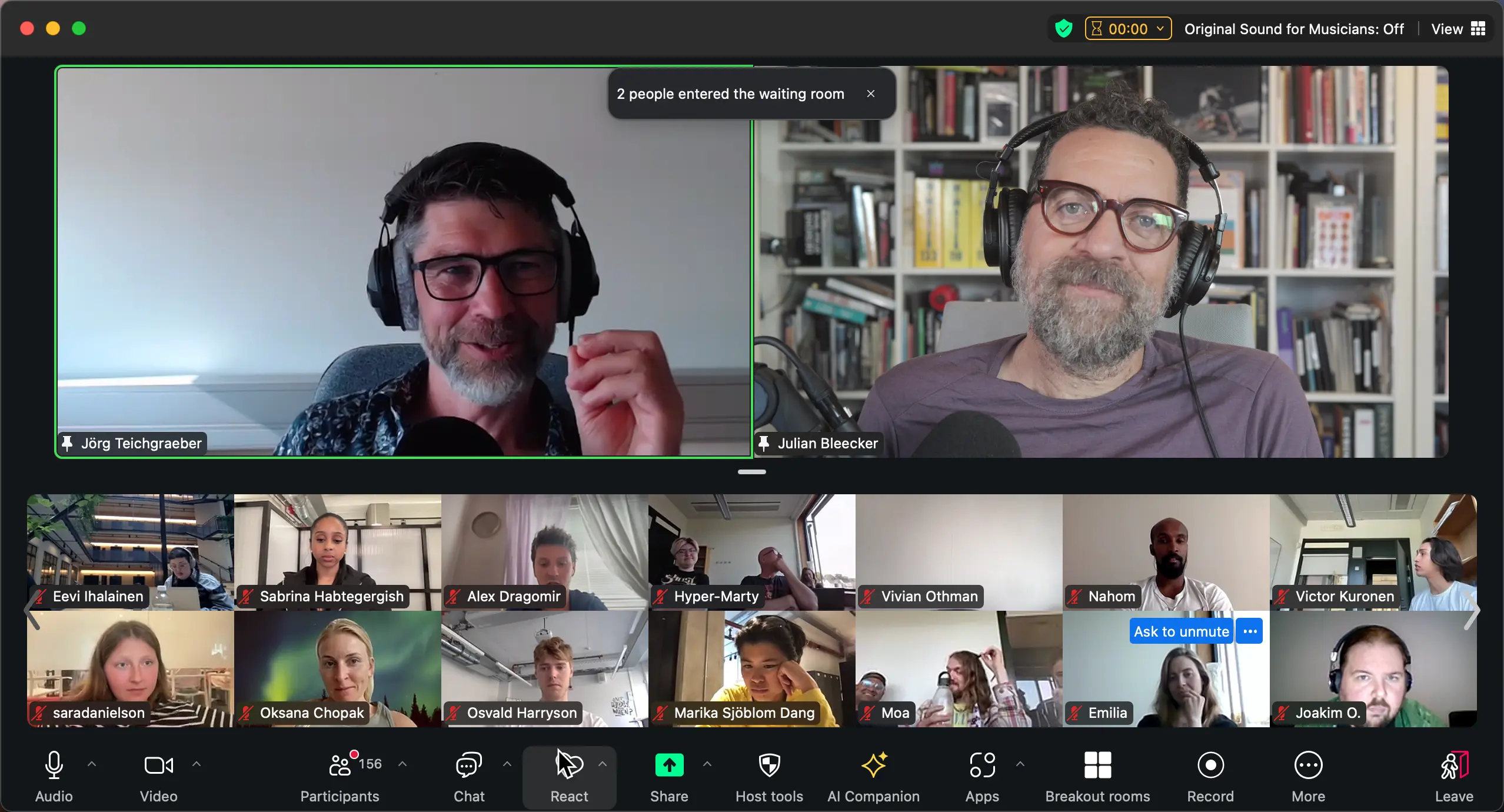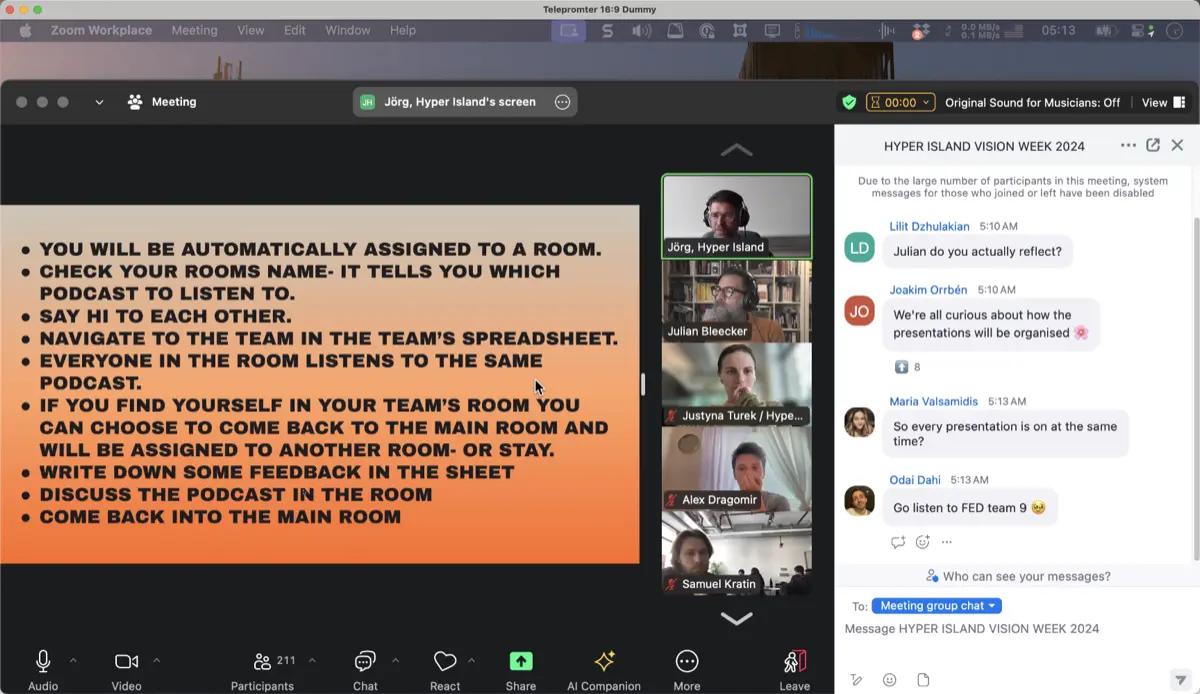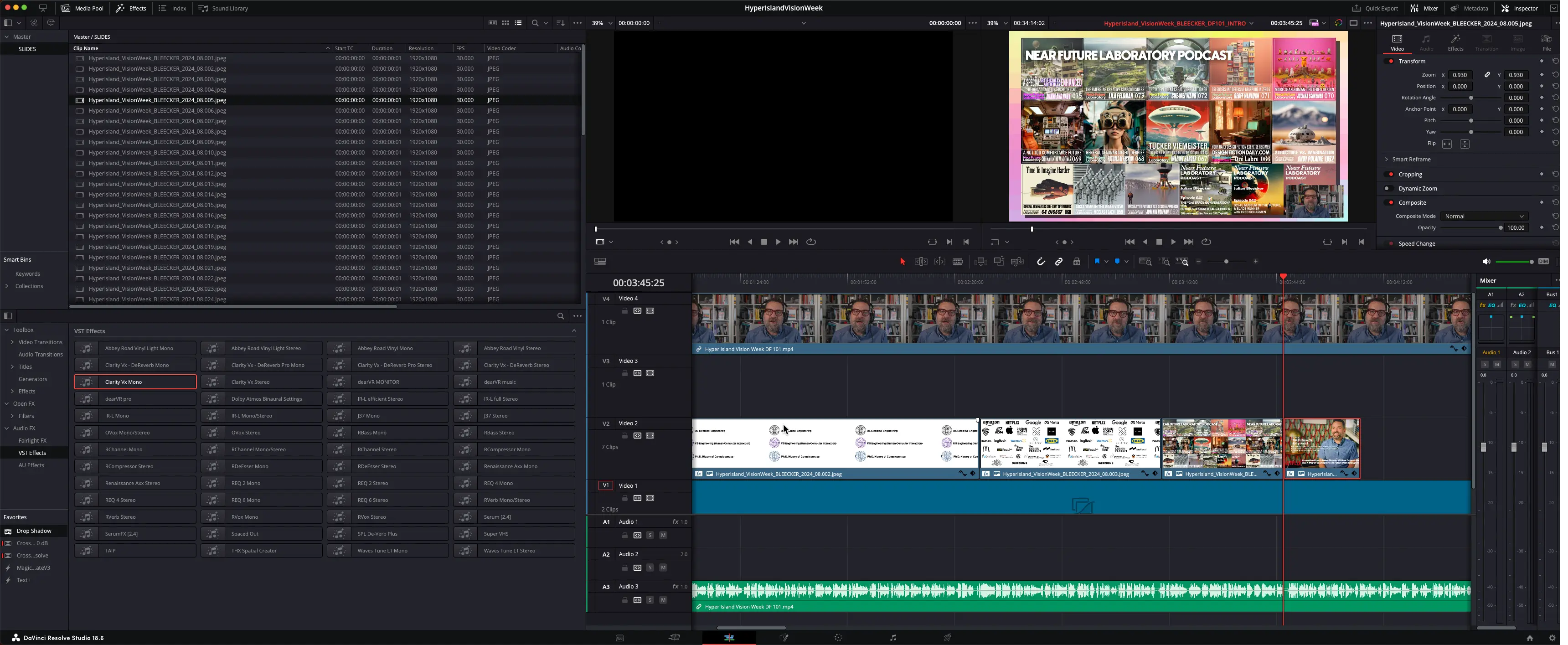Hyper Island Vision Week 2024 Lecture
An Online Lecture Preparing for a Design Fiction Sprint

Talk Date: 8/19/24, 5:00 PM
Published On: Oct 13, 2024, 08:06
Updated On: Oct 13, 2024, 08:06
Just like physical muscles, our imaginative faculties require regular exercise to grow stronger and more flexible. During Vision Week, students engage in activities that stimulate their creative thinking, allowing them to explore and develop new ideas in a supportive environment. This metaphor underscores the importance of continuous practice in nurturing the ability to envision alternative futures and innovative solutions.
During Vision Week I worked with Jörg Teichgraeber to prepare and facilitate a 24-hour design sprint focused on imagining into possibile futures through Design Fiction where we would merge creativity, speculation and Imagination with critical reflections to explore possible futures. The sprint’s brief was to imagining into an inhabited future as if one found a podcast from that future. This conceit invites students to immerse themselves in a near-future world that feels almost like today, yet with subtle, intriguing differences that hint at broader societal shifts. As an alternative to ‘top-down’ worldbuilding, this classic Design Fiction approach brings back artifacts that are like partial fragments of a possible world from the future.
We gave students a fun task: create a podcast episode that conveys the nuances of this imagined future. The podcast is the partial fragment implying various contours of the future. We encouraged students to to approach this challenge not by writing a traditional story, but by producing an artifact that implied the world such that it makes the future tangible and relatable to the podcast listener. The podcast could take the form of a news report, an interview, or a conversation, allowing students to explore how everyday life might evolve in unexpected ways.
For example, a student might choose to explore a future where purchasing “machine intelligences” at a convenience store is as normal as buying AAA batteries, prompting a podcast discussion about the societal implications of such technology. One of the more engaging and fun parts of the brief I thought was to encourage students to integrate fictional advertisements into the podcast, reflecting what advertisements are: representations of our hopes, fears, dreams, anxieties and desires. These kinds of things are what deepens the speculative, design fictional exploration.
To facilitate remotely from Los Angeles (the week itself was more or less on CET), I pre-produced a ‘Design Fiction 101’ video that Jörg shared with the (300+) student-participants. This was the introduction to Design Fiction as well as a description of their assignment, the Design Fiction Design Sprint Design Brief.
I will say that the production of the video did take quite some effort, especially as I had just come off of vacation, was not entirely sure what to present, and only had about 12 hours to get everything done, wrapped, and sent over to Jörg and the team at Hyper Island.
I reworked an existing Design Fiction 101 slide deck, adjusting some things based on recent thinking and some evolved ideas and concepts. Then it was several hours recording myself as if I was presenting the slide deck. Then the next morning — before the deadline to get the video over to Sweden 9 hours ahead of me — I got into Davinci Resolve and spent more than a few hours (and one crash) editing things together with the slides integrated into the video presentation.

Students raised some great questions about whether to include technical aspects, how to build their world, and the right balance of tech/culture/human behaviors integration. I was satisfied and excited that we were able to highlight the importance of bringing Imagination to the effort, the value of iterative creativity and exploration — and fun.

